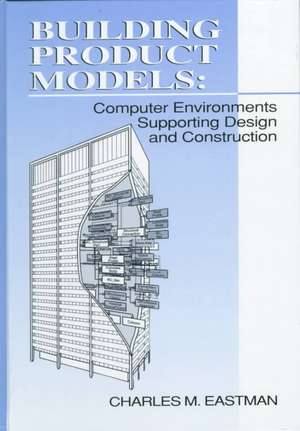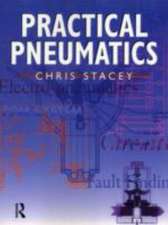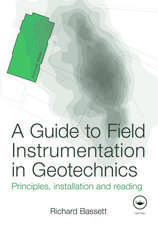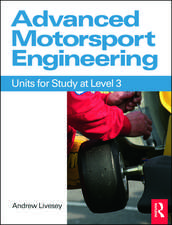Building Product Models: Computer Environments, Supporting Design and Construction
Autor Charles M Eastmanen Limba Engleză Hardback – 29 iul 1999
Organized into three sections (history, current tools and concepts, and existing efforts and research issues), this resource provides the field of building product modeling with a standard reference as well as a single, comprehensive text for university courses.
Until now, all the efforts in building modeling have been reported in research journals and conference proceedings or been made available as draft standards on the Internet. Building Product Models is the only book available on this vital field, bringing together essential aspects of major efforts from the early 1970s to the present.
Preț: 949.14 lei
Preț vechi: 1186.43 lei
-20% Nou
Puncte Express: 1424
Preț estimativ în valută:
181.64€ • 197.23$ • 152.58£
181.64€ • 197.23$ • 152.58£
Carte tipărită la comandă
Livrare economică 22 aprilie-06 mai
Preluare comenzi: 021 569.72.76
Specificații
ISBN-13: 9780849302596
ISBN-10: 0849302595
Pagini: 424
Ilustrații: 10 Halftones, black and white; 1 Tables, black and white
Dimensiuni: 178 x 254 x 29 mm
Greutate: 0.94 kg
Ediția:1
Editura: CRC Press
Colecția CRC Press
ISBN-10: 0849302595
Pagini: 424
Ilustrații: 10 Halftones, black and white; 1 Tables, black and white
Dimensiuni: 178 x 254 x 29 mm
Greutate: 0.94 kg
Ediția:1
Editura: CRC Press
Colecția CRC Press
Public țintă
ProfessionalCuprins
THE CONTEXT AND HISTORY OF BUILDING MODELS
The Context of Building and Design
The Evolution of Computer Models of Buildings
Earlier Product Exchange Standards
CURRENT WORK IN PRODUCT AND BUILDING MODELS
Modeling Concepts
ISO-STEP
STEP Integrated Resources
Building Aspect Models
Building Framework Models
Industry Foundation Classes
RESEARCH ISSUES
Information Exchange Architectures
Modeling Language Issues
APPENDIX
The Context of Building and Design
The Evolution of Computer Models of Buildings
Earlier Product Exchange Standards
CURRENT WORK IN PRODUCT AND BUILDING MODELS
Modeling Concepts
ISO-STEP
STEP Integrated Resources
Building Aspect Models
Building Framework Models
Industry Foundation Classes
RESEARCH ISSUES
Information Exchange Architectures
Modeling Language Issues
APPENDIX
Descriere
Filled with examples supported by illustrations, this book provides an in-depth review of building model concepts, supporting technologies, as well as the resulting standards and demonstration projects. Organized into three sections (history, current tools and concepts, and existing efforts and research issues), the author reviews DXF and IGES as existing exchange technologies and presents a thorough introduction and explanation of ISO-STEP. This resource provides the field-including building professionals, real estate professionals, and software developers-with a standard reference as well as a single, comprehensive text for university courses.










